SAINT-ELLIER-LES-BOIS, France — It’s almost 80-years on, but Marie Bastien said the memory of the American fighter plane being shot down near her village in northern France remains as vivid as ever.
“I still see it, as if it was yesterday,” Bastien, 94, told NBC News in French last week before widespread celebrations across France on June 6 for the 80th anniversary of the D-Day landings when more than 150,000 American, British and Canadian forces charged the beaches of Normandy to liberate the Nazi-occupied country from fascism.
Bastien was just 14 when 1st Lt. Paul Chaufty’s fighter was shot out of the sky, but since then she has worked hard to keep his memory alive with her daughter Mireille and her wider network of friends and family.
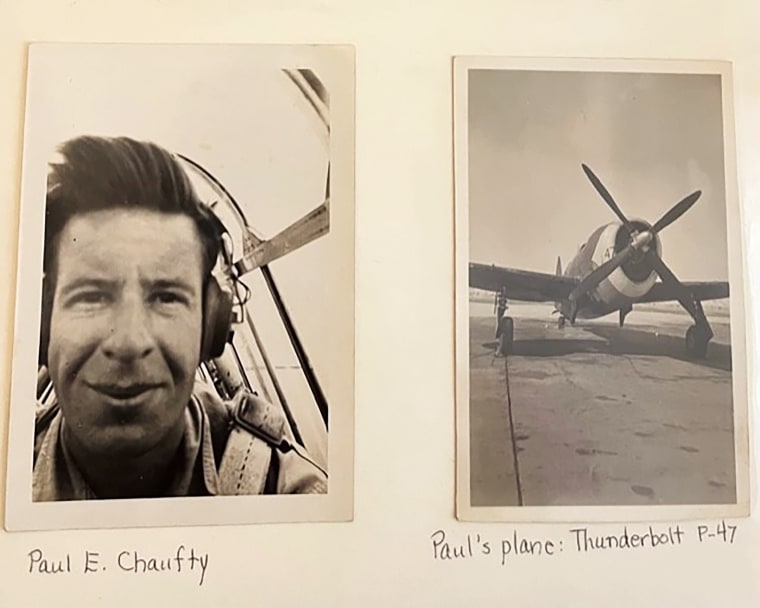
Her hard work paid off, and last Saturday she stood alongside some of Chaufty’s American relatives while a plaque honoring his memory was unveiled in the village of Saint-Ellier-les-Bois.
Bastien said Chaufty died on Aug. 13, 1944, the day allied forces drove Nazi occupiers from her home village of Ciral two months after D-Day.
Chaufty, a U.S. Army Air Force pilot, was on an armed reconnaissance mission when his P-47 Thunderbolt plane was hit by enemy fire, according to an Army report compiled two days later.
The report said Chaufty had managed to bail out of his plane, but his parachute failed and he fell to his death in a nearby field. His plane came down about a mile away, between Ciral and Saint-Ellier-les-Bois.
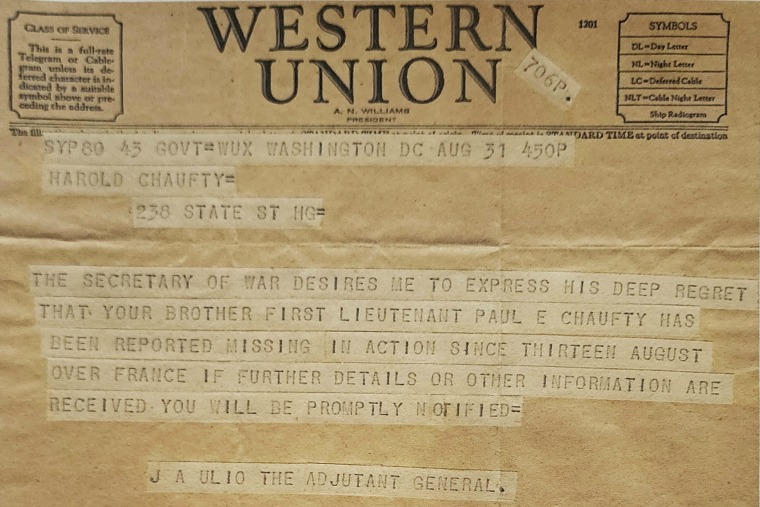
Bastien said her father, Maurice, saw the plane and later went out to search for Chaufty’s body, finding it the next day underneath his parachute. They were able to identify him from his dog tags, she added.
“They brought him with a jeep to our backyard, and that’s when I saw him,” she said, adding that Chaufty’s body was prepared for burial there.
At one point, she said, “they asked if we wanted to give a sheet and take the parachute, but we said, ‘No, he needs to be buried with his parachute.’”
Four days later, he was buried at a temporary American military cemetery in the nearby town of Gorron, military records show. His body was later repatriated to Fairview Cemetery in his hometown of Carthage, N.Y.
While Bastien worked hard to keep Chaufty’s memory alive in France, his great niece Nicole Saunders, 53, said she knew little about her grandfather Melvin Chaufty’s brother.
“What I knew growing up was simply that he was a pilot, you know, for the United States Army Air Force and that he was shot down over France in 1944, and that’s all I ever knew,” Saunders said. “I think that the family really didn’t have a lot of answers about, you know, where in France that happened or anything like that.”
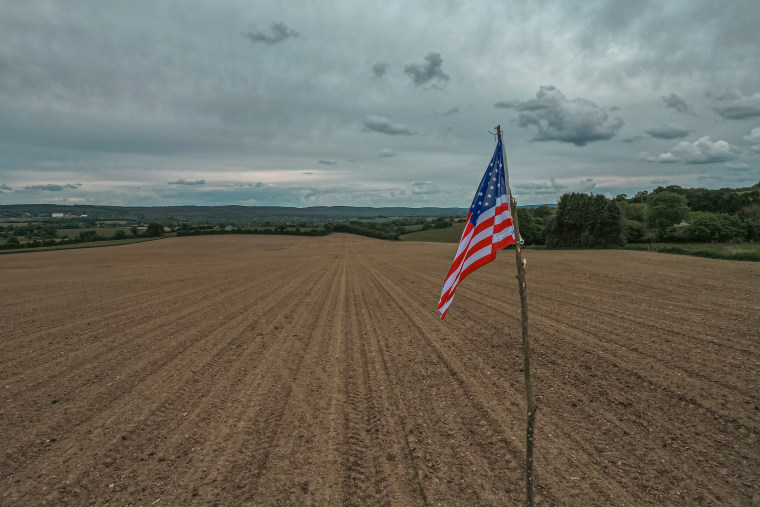
The youngest of nine children, Saunders said Chaufty had grown up during the Great Depression. Unable to follow his dream of being a pilot in America, she said he had joined the Royal Canadian Air Force before World War II, before transferring to the U.S. Army Air Force after the Japanese attack on Pearl Harbor in December 1941.
Saunders said Bastien’s daughter Mireille, 61, reached out to her family via a genealogist who passed on a letter from her mother. Later they connected by email and a WhatsApp group she set up in February, she said.
Mireille said that it was “very moving to know that he was someone just like us but who died in the end, a hero.”
Almost 80 years after her great uncle’s death, Saunders joined the woman who had worked so hard to keep his memory alive as a stone plaque was unveiled in Saint-Ellier-les-Bois, near where he was found. Fittingly, it was shrouded in a parachute.
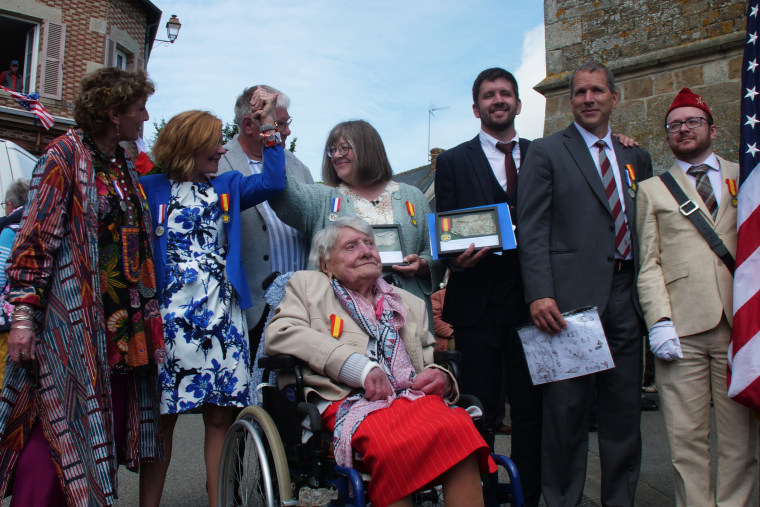
Describing the event as “super emotional,” Saunders said it was “really touching,” to “be there with the family of the person who found him.”
Saunders was also taken to the crash site where local historians and hobbyists, some dressed in WWII-era uniforms, were ready with a steady stream of questions about her great uncle. An amateur radio operator also set up an antenna on the edge of the village to broadcast the ceremony.
Saunders said that it was “really special” that Bastien had worked so hard to keep her great uncle’s memory alive.
Bastien, who briefly left a hospital where she was being treated for a heart condition and broken wrist, said the ceremony “made me happy.”
“I always said we needed to do something,” she said.
Tony Brown reported from Saint-Ellier-Les-Bois, and Meagan Fitzgerald from London.

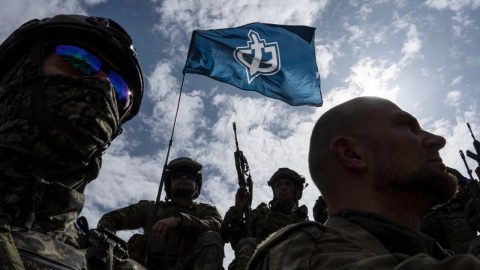



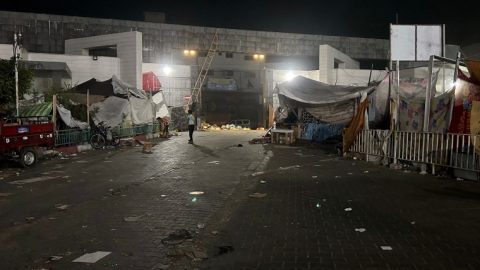
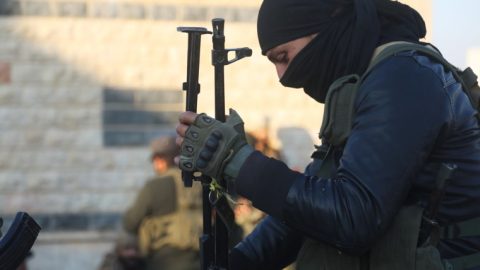


Recent Comments